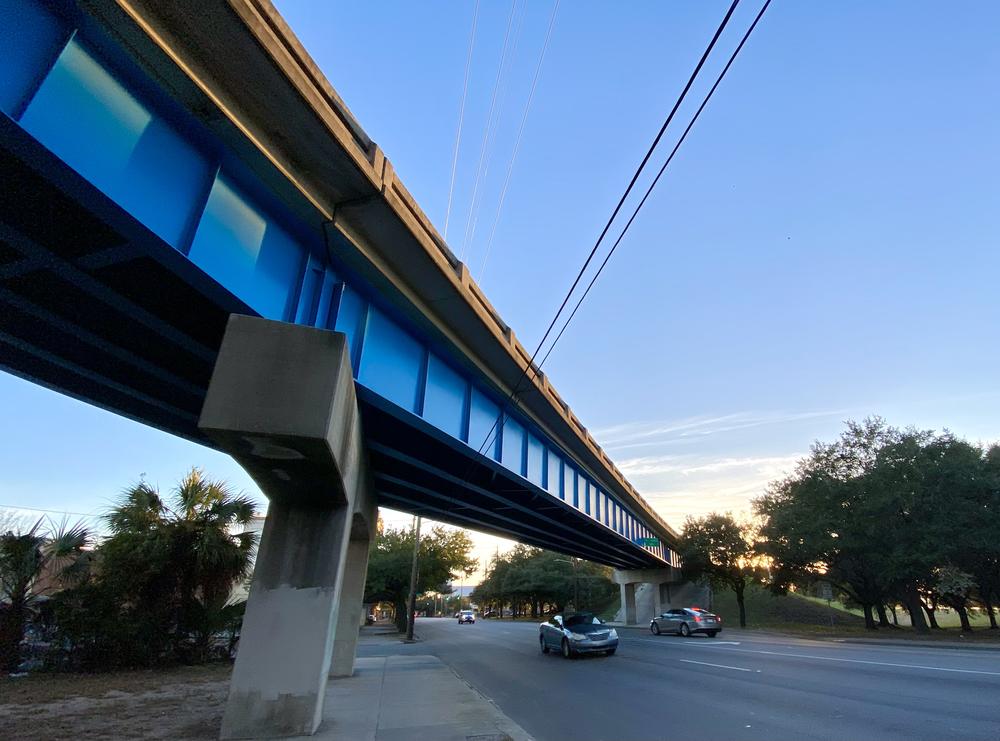
Caption
The Interstate 16 flyover crosses Martin Luther King Jr. Boulevard in Savannah, exiting onto nearby Montgomery Street.
Credit: Benjamin Payne / GPB News
LISTEN: A feasibility study will examine I-16's eastern terminus on downtown Savannah's west side. GPB's Benjamin Payne reports.

The Interstate 16 flyover crosses Martin Luther King Jr. Boulevard in Savannah, exiting onto nearby Montgomery Street.
The Georgia Department of Transportation plans to conduct a feasibility study on the possible removal of the Interstate 16 flyover from the west side of downtown Savannah.
The Savannah City Council approved in December a memorandum of agreement with GDOT to conduct the $900,000 “preliminary engineering” study, with the state paying 80% and the city paying the remaining 20% through a federal grant from the Reconnecting Communities and Neighborhoods program.
The flyover crosses Martin Luther King, Jr. Boulevard and exits onto Montgomery Street, marking the eastern terminus of I-16, which runs from Savannah to Macon.
When built in the 1960s, the state demolished many Black-owned businesses and homes on and near West Broad Street (later renamed Martin Luther King, Jr. Boulevard), dealing a blow to Savannah's African American community.
“City staff firmly believes that the removal of this flyover would be a big positive benefit, not only to the communities surrounding that flyover but to our overall traffic patterns,” said Savannah City Manager Jay Melder, adding that the flyover carries very little freight traffic.
According to notes prepared by city staff, the removal of the flyover and exit ramp is “intended to spur neighborhood revitalization and equitable redevelopment opportunities over the reclaimed 8 acres of land in downtown Savannah for affordable housing, businesses, civic spaces, and other community needs as identified through a future public engagement process.”
Georgia U.S. Sen. Raphael Warnock, who grew up in public housing adjacent to the flyover, is a strong supporter of the flyover's removal, writing in a letter to U.S. Secretary of Transportation Pete Buttigieg, “It is a dream of mine to see that community restored.”
The upcoming study will not be the first time that GDOT will have examined the flyover's possible removal. In 2008, the agency conducted a similar one, which found that the removal would improve vehicle and pedestrian mobility, and would help restore affected city blocks to their original form.
